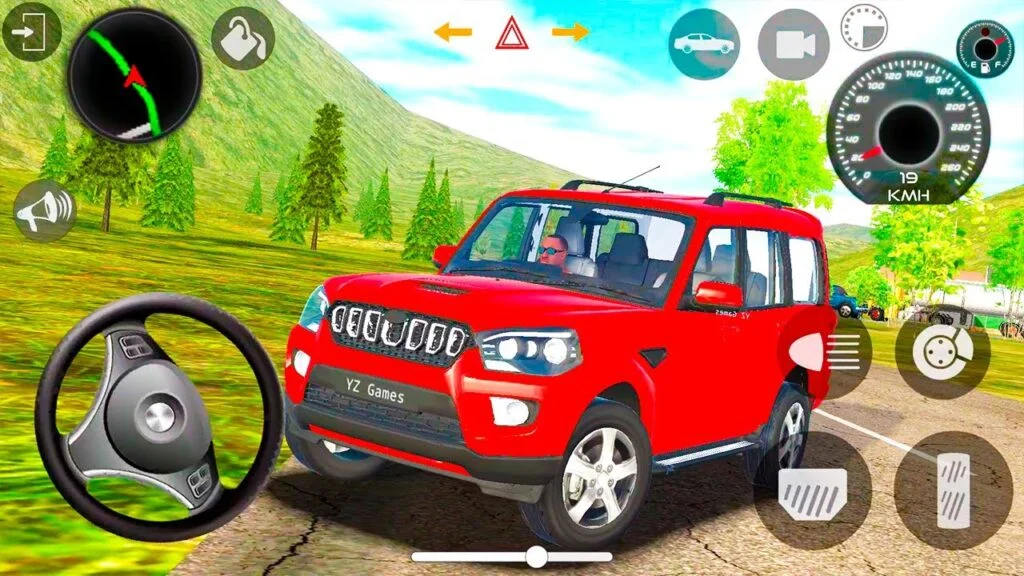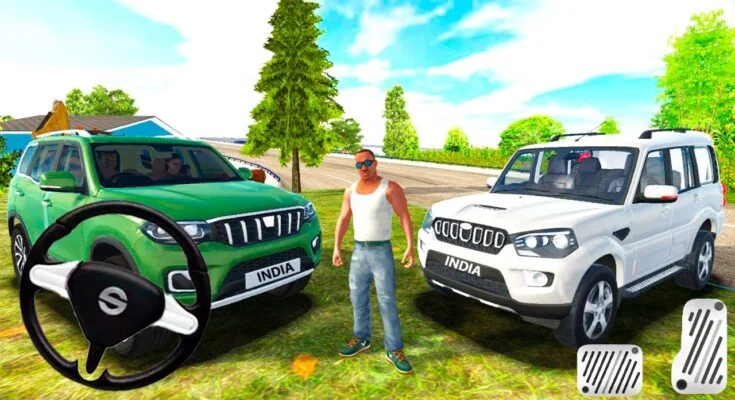

The global gaming industry has long been dominated by titles from the West and East Asia, but a new genre has been steadily carving out its own space: Indian car games. This niche, which combines the excitement of racing with the authentic and often chaotic charm of Indian roads, has exploded in popularity, offering a unique and relatable experience to millions of players, particularly in India’s booming mobile market.
This article explores the defining characteristics of this genre, its impact on the local gaming scene, and the promising trajectory of its future.
The Appeal of Authenticity
At its core, the success of Indian car games lies in their authenticity. These aren’t just generic racing titles with a new skin; they are meticulously crafted to reflect the real-world driving experience in India.
- Real-World Environments: Developers go to great lengths to recreate famous landmarks and everyday scenes. Players can drive past the historic Gateway of India in Mumbai, navigate the bustling lanes of Delhi’s Chandni Chowk, or cruise through scenic rural landscapes complete with banyan trees, village huts, and roadside vendors. This attention to detail creates a strong sense of nostalgia and familiarity for Indian players, while offering a new, vibrant setting for a global audience.
- Relatable Road Culture: One of the most unique aspects is the simulation of India’s distinct traffic dynamics. The games replicate the “controlled chaos” of Indian roads, where lane discipline is a suggestion rather than a rule. Features like overzealous honking, unexpected jaywalking, and the art of navigating through a mix of cars, bikes, and even stray animals are not just obstacles—they are integral parts of the gameplay that resonate with local players on a deeply personal level.
- Iconic Vehicles: The games prominently feature cars that are popular and culturally significant in India. Vehicles like the Mahindra Scorpio, Maruti Suzuki Swift, and Tata Nano are staples, allowing players to drive and customize cars they see every day. This connection to local car culture makes the game more engaging than titles featuring only international luxury brands.
The Engine of the Mobile Gaming Market
The rise of Indian car games is intrinsically linked to the dominance of the mobile gaming market in the country. With affordable smartphones and some of the world’s cheapest data, India has become the largest mobile gaming market by downloads. According to a 2025 Sensor Tower report, India recorded an impressive 8.45 billion installs in FY 2024-25, with a significant portion of this growth driven by genres like Simulation and Arcade.
This is where Indian car games truly shine. They are typically freemium titles, offering free-to-play access with monetization through in-app purchases and ads. This model is perfectly aligned with the Indian market, where a large number of players prefer to download and try games for free before committing to any spending.
Key titles that have captured this market include:
- Indian Cars Simulator 3D: Praised for its realistic driving physics and extensive open-world maps.
- Indian Bike & Car Game 3D: A popular game that successfully combines two of India’s most common modes of transport, offering a versatile open-world experience.
- Scorpio Mahindra Car Game: A great example of a hyper-localized game built around a single, iconic car model that has found a dedicated fanbase.
The Road Ahead: Challenges and Opportunities
While the genre is on a high-speed growth trajectory, it faces some notable challenges. The main hurdle is competing with globally established titles like Need for Speed and Forza Horizon, which have larger budgets and more advanced graphics. Many Indian-developed games, due to budget constraints, can sometimes lack the technical polish of their international counterparts.
However, the future looks bright, with several trends poised to drive the genre forward:
- Technological Advancements: The integration of new technologies like AR (Augmented Reality) and VR (Virtual Reality) will create more immersive experiences. Imagine a VR game where you can “walk” around a digital recreation of your own neighborhood or drive an AR car on your living room floor.
- Esports and Competitive Gaming: As esports gains mainstream acceptance in India (with the market projected to reach $151 million by 2025), competitive Indian car games could emerge. The competitive spirit of street racing and time-trial challenges could form the basis for new esports leagues.
- Collaborations and Monetization: Partnerships with real-world Indian car manufacturers could lead to exclusive in-game vehicles and branding opportunities. Developers are also getting smarter with monetization, balancing in-app purchases with a rewarding user experience, as highlighted by a survey that found 70% of Indian mobile gaming businesses believe localized content will be a crucial growth factor.
Conclusion
Indian car games are more than just a passing trend; they are a cultural phenomenon that has successfully blended familiar themes with engaging gameplay. They serve as a testament to the ingenuity of Indian developers who are creating content for and by a local audience, and in doing so, are putting a distinctively Indian spin on the global gaming landscape.